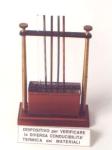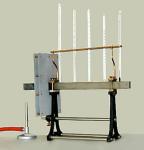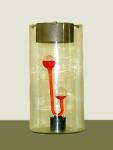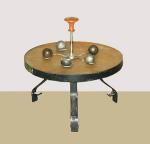Description
This is the classical model with a disk of paraffin, an iron tripod, a support for five
balls of different metals (iron, zinc, copper, tin, lead), and a brass plate to melt the disks
of paraffin and to prepare new ones. The balls have the same weight and the same diameter, as
we have emptied the centre of those made of denser metal to obtain equal surfaces of contact.
The tripod must be used in the two ways with the plate at the bottom to hold the disk, that
leans on the thin plates protruding from the feet; with the plate at the top to melt the disk.
|
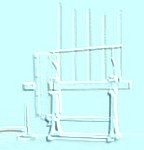

 Menu
Menu

